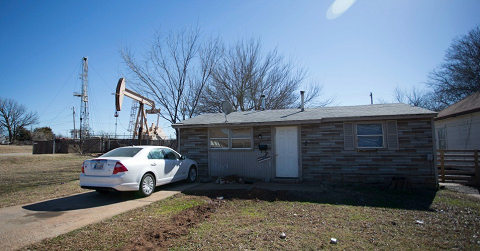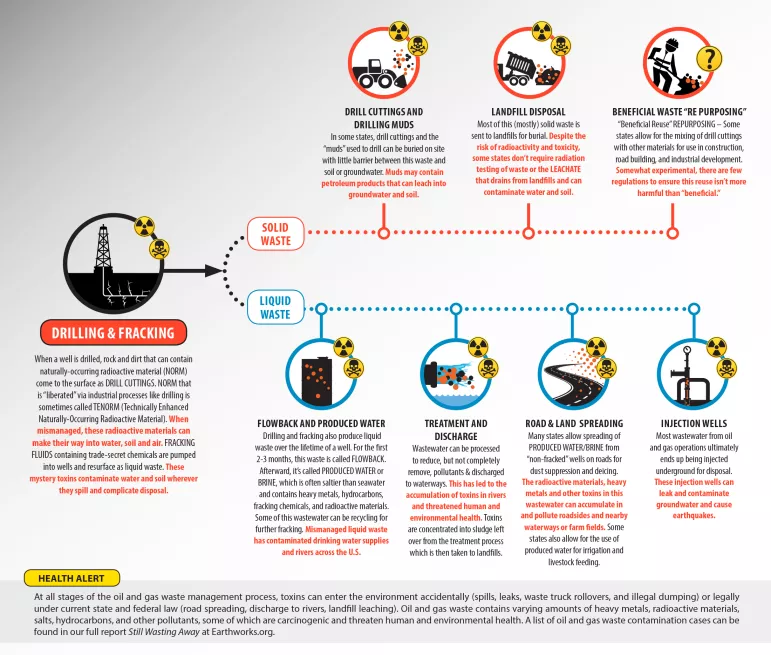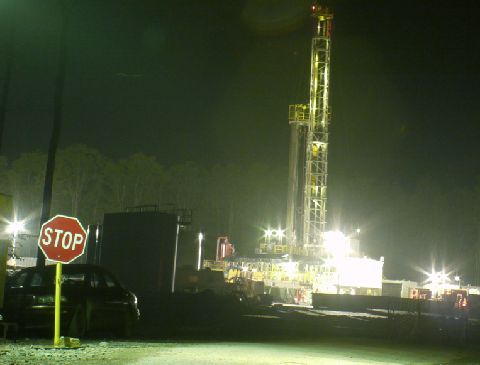
Tell PA DEP: Deny Elcon’s Hazardous Waste Permit Application
July 1, 2019
Babies Born Near Oil and Gas Wells Are Up to 70% More Likely to Have Congenital Heart Defects
July 22, 2019By Melissa Troutman, Earthworks, June 18, 2019
Download the full report – Still Wasting Away – as a pdf
Read the Earthworks press release
Download Earthworks comments on the EPA’s Study of Oil and Gas Extraction Wastewater Management Under the Clean Water Act
While portions of our society begin the transition away from fossil fuels, the United States is still on track to unleash 60 percent of all new oil and gas production globally between now and 2030 – four times more than any other country. Being the world leader in oil and gas production also means the U.S. leads in the production of oil and gas waste, which contains carcinogens, heavy metals, secret fracking chemicals, radioactive materials, and other toxics.
Even if new expansion stopped tomorrow, today’s oil and gas wells will continue to produce massive amounts of waste long after the drilling has stopped. Oil and gas waste has and continues to poison the environment and impact public health in ways that can be prevented. This report shows how oil and gas waste is being mismanaged and what must be changed to curb further damage.
Oil & gas waste oversight isn’t improving
In 2015, Earthworks published Wasting Away: Four states’ failure to manage oil and gas waste in the Marcellus and Utica Shale after many high-profile events drew public attention to the limitations and risks of disposal methods. In this latest report, Still Wasting Away, we’ve taken another look and found that regulations have barely improved or have even worsened in some states since 2015. In addition, other developments have emerged:
- More waste is being produced per oil and gas well, and per unit of energy. A ‘more waste for less fossil gas’ model has significant implications for the future of waste management, including rising disposal costs for an industry that is already pushing hard at both federal and state levels for regulatory rollbacks.
- Using byproducts that result from new methods of processing oil and gas waste, industry has created consumer products that are now on the mainstream market. For example, sodium chloride extracted from fracking wastewater is currently being sold as Clorox Pool Salt.
- The list of pollution problems related to oil and gas waste management has continued to grow alongside continued expansion of the oil and gas industry.
- Waste tracking, testing, storage, treatment and disposal policies still vary significantly from state to state, giving waste generators the option of transporting waste to states with weaker protections for environmental and public health.
- More people live near oil and gas operations where toxic waste is produced, transported and disposed than ever before. An estimated 17.6 million Americans live within one mile of oil and gas development, including nearly a quarter of the population in Ohio, and half of the population in West Virginia. 12.6 million live within 1/2 mile of an active oil and gas well, compressor station, or processing plant.
A legal loophole makes oil & gas waste…”safe”?
How frack waste is disposed of:





